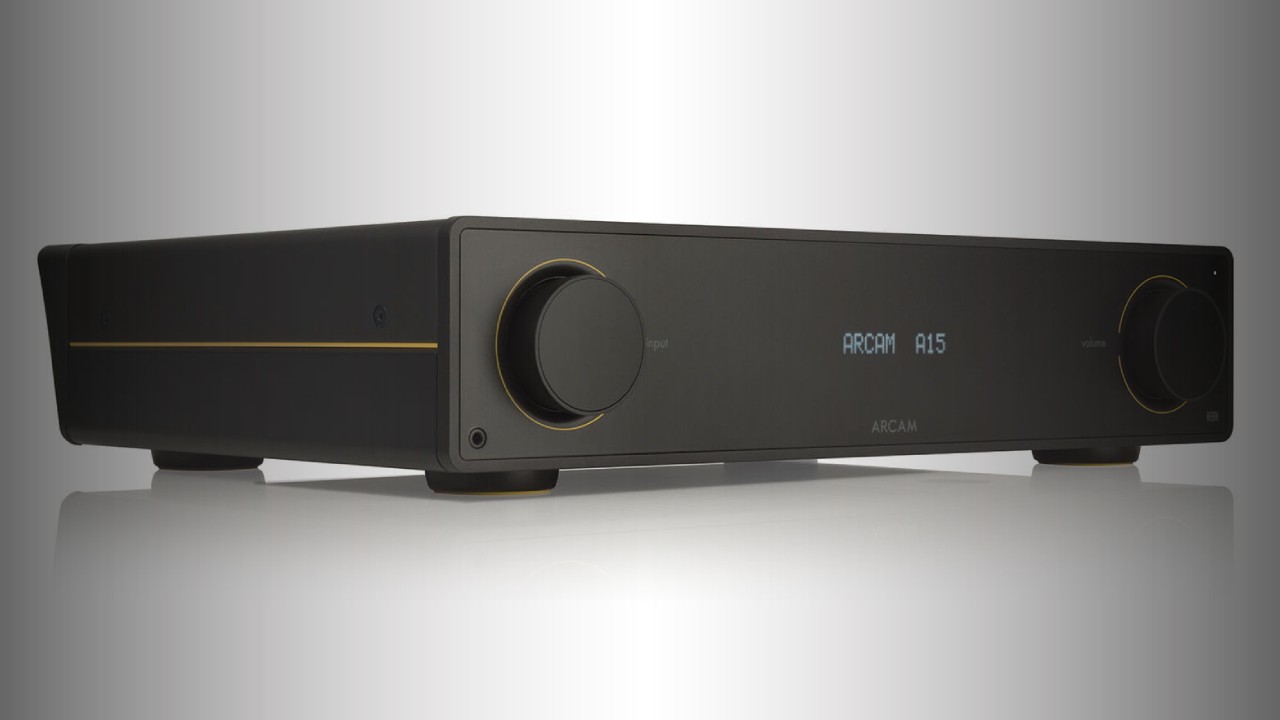The Arcam A15 sits right in the middle of the company’s new Radia series—between the smaller A5 and the more powerful A25. On paper, it looks like the perfect sweet spot: enough power to drive proper floorstanders, a full set of modern inputs, and a design that feels fresh but understated. After spending three weeks with it, moving it between rooms, experimenting with placement, and even comparing it to a French rival, I can confidently say the A15 is far more than just “the middle child.”
Design and Build
The Radia series introduces a new aesthetic for Arcam: minimalist lines, a frosted glass front, and two big control wheels with subtle yellow accents peeking through the ventilation slots. It’s modern and elegant without shouting for attention. The 10-kg chassis feels solid, and the packaging is thoughtful—eco-friendly, sturdy, and easy to unpack.
On the back you’ll find three RCA inputs, a moving-magnet phono stage, two coaxial and one optical digital input, pre-outs, and Bluetooth 5.2 with aptX Adaptive. In short: all the essentials are here, whether you’re spinning vinyl, streaming from your phone, or hooking up a TV.
Arcam A15
The only small gripe is the “visor” lip above the connectors, which makes plugging in cables a little fiddly in dim light. Otherwise, build quality inspires confidence.
Features and Functionality
The A15 runs in Class A/B, delivering 80 watts per channel into 8 ohms (120 into 4). That’s enough to comfortably drive speakers like the KEF Q750 floorstanders I paired it with.
The front panel keeps things simple: input and volume via the two big wheels, a small white display, and a discreet 3.5 mm headphone jack. The remote control mirrors the minimalist approach—no frills, just practical buttons for input, volume, mute, and basic playback.
Bluetooth works flawlessly, and while I wish there was a USB input for direct connection to a laptop or phone, that’s reserved for the higher A25. Still, the mix of analog, digital, and wireless connections makes the A15 flexible for almost any modern setup.
Arcam A15
Sound Performance
Here’s where the story gets interesting. My first impressions weren’t great. In my larger, untreated room, the A15 sounded soft and a bit lacking in bass depth. I even thought about writing it off completely. But moving it into a smaller, more damped room changed the character significantly—suddenly the bass returned, though it still lacked focus.
The breakthrough came when I did a full rearrangement of my larger room: repositioning furniture, damping a troublesome corner, widening speaker spacing, and connecting the amp via optical to my TV. That was the moment the A15 clicked.
Arcam A15
The sound opened up into a wide, immersive stage with clean, controlled bass and a balance that worked across genres. Highs were airy and detailed without sharpness, mids had a smooth neutrality, and bass was deep but never bloated. With the KEFs, the amp leaned slightly warm yet remained transparent enough to let cables and sources make their mark.
Perhaps the most surprising moment was comparing Bluetooth vs. my external DAC (Shanling H5). To my ears, Bluetooth actually held its own, sounding more enjoyable than expected—good enough that friends streaming from their phones were perfectly happy. But with optical, the A15 really came alive, offering detail and dynamics that felt concert-like in scale.
Arcam A15
Headphone Output
The headphone jack looks almost like an afterthought, tucked into the corner. But don’t be fooled. Plugging in the Sennheiser HD800S revealed a headphone stage that is far from “for show.” It delivered a full, detailed presentation with tight bass and a wide stage—better than many standalone DAC/amps I’ve tried in this price range.
Everyday Use
The A15 runs warm (as Class A/B amps tend to), and it takes some time to fully understand what it’s capable of. At first, I doubted it. But after experimenting with rooms, cables, and sources, the amp grew on me in a way that very few pieces of gear do. It’s not about instant fireworks; it’s about refinement, balance, and living with music day after day.
Arcam A15
Comparison and Final Choice
I also brought in an Atoll IN100 Signature for comparison. The Atoll offered more body in the bass and a stronger, more muscular sound, but it leaned brighter up top. Ultimately, I preferred the Arcam’s slightly softer, more versatile character. It handles rock, jazz, and electronic equally well without fatiguing the ears.
That was the deciding factor: I bought the A15.
Verdict
The Arcam A15 is an amplifier that rewards patience and setup care. It doesn’t grab you with instant drama, but it grows on you—showing its strengths little by little until you realize just how well-rounded it is. With its modern design, broad functionality, and a sound signature that’s refined, neutral-warm, and multi-genre friendly, it’s an amp I can easily recommend as a first step into serious hi-fi.
Pros
-
Elegant, modern Radia design with quality build
-
Versatile connectivity: analog, digital, Bluetooth, and phono
-
Excellent headphone stage
-
Smooth, neutral-warm sound, detailed yet non-fatiguing
-
Remote control included
Cons
-
Runs warm (typical for Class A/B)
-
Bass can feel light in the wrong room/setup
-
No USB input (reserved for A25)
-
Takes time and effort to reveal full potential
